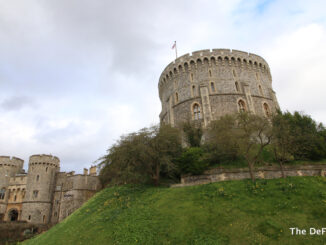
BATH, England — The difference between Bath and London is palpable from the first steps out of the Bath Spa Railway station.
An absolutely charming city, Bath is located roughly 100 miles west of London, making it the perfect destination for a day trip. A tourist destination since the city’s founding during Roman times, Bath today is home to roughly 80,000 residents and sees more than 4.4 million visitors per year.
The city has a rich and colorful history and may have been the site where King Arthur in 500 defeated the Anglo-Saxons during the Battle of Badon. Years later, in 1987, Bath was designated a World Heritage Site.
For starters, here are five must-see attractions in the city:
Roman Baths: The Roman Baths, for which this southwestern England city is named, are some of the most remarkable Roman ruins outside of Rome itself. The area’s natural hot springs were used long before the Romans under Emperor Claudius invaded Britain, starting in 43 AD. Archaeological evidence shows human activity around the springs dating to 8,000 BC, though the area may have been too hot and swampy for a permanent settlement.
Today, the Roman ruins stand at the center of this historic city. Much like their counterparts in Rome itself, the bath ruins provide a marvelous insight into both the magnificence of the buildings constructed by the Romans and daily life during Roman times.
Bath Abbey: The imposing Gothic abbey, a former Benedictine monastery, towers high above the Roman baths and the street below. Osric, King of the Hwicee, founded the parish in 675, and new churches were erected in the 12th century under John of Tours and during the 16th century.
One of the building’s most unique features is the ladder of angels located on the west front. According to one account, Bishop of Bath Oliver King designed the ladder based on a dream he had about ascending and descending angels.
No. 1 Royal Crescent: A famous semicircle row of Georgian townhouses were built based on designs by architect John Wood the Younger between 1767 and 1774. One of the houses, the No. 1 Royal Crescent, has been preserved as a museum, giving visitors a window into 18th century life.
Complete with authentic furniture and artifacts, each room tells a story of daily life 300 years ago. In one of the rooms, the Gentlemen’s Retreat, visitors can learn more about Henry Sandford, the town house’s first resident who lived here from 1776 until 1796.
Bath Postal Museum: Bath holds a unique place in Great Britain’s postal history. Both John Palmer’s mail coaches and Ralph Allen’s “cross post” mail system — meaning letters could be sent directly from one provincial town to another and did not have to pass through London — trace their origins to Bath.
The museum was first founded in 1979 and moved to its current location beneath Bath’s post office on Northgate Street circa 2006. One of the museum’s true gems is a 1727 contract signed by Ralph Allen, who paid £6,000 per year for the right to “cross post” mail.
Jane Austen Centre: Author Jane Austen lived in Bath from 1801 until 1806, and the Jane Austen Centre on Gay Street explores the effect Bath had on Austen’s writings. The museum is certainly a mist-see for Austen fans, but it’s also for visitors looking to learn more about historic bath through the experiences of one of its favorite residents.
Eat Here
- Sally Lunn’s: Located in a house dating to 1482 – making it the oldest house in Bath – it was here circa 1680 a young Huguenot baker named Solange Luyon, and later Anglicized as Sally Lunn, created the first Bath bun. This regional specialty, which is similar to a brioche bun and can be enjoyed with either savory or sweet toppings, is famous worldwide. The restaurant, and the accompanying museum in the basement, is an absolute must-see while in Bath and makes for the perfect lunch destination.
- The Salamander: Home of an incredible line of Bath Ales’ beers, The Salamander, affectionately referred to as The Sally, is a quaint and charming pub in the heart of Bath. It’s frankly no surprise The Telegraph newspaper in January 2014 named The Salamander one of Britain’s best pubs.




